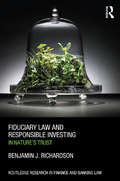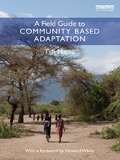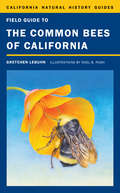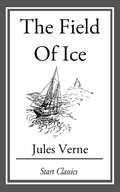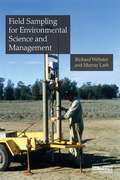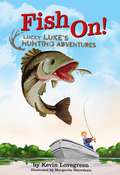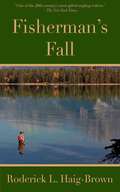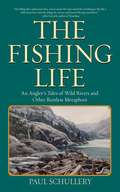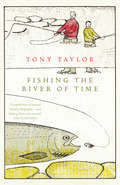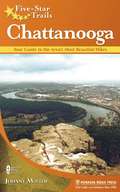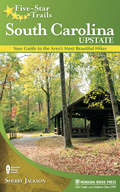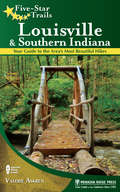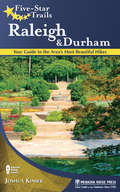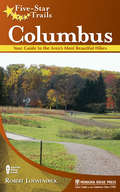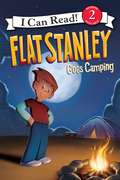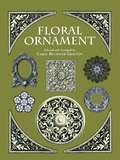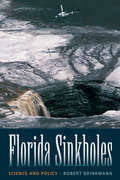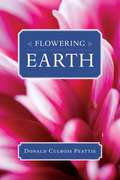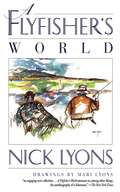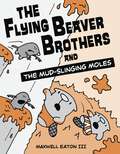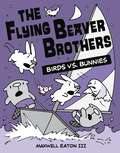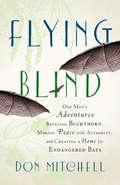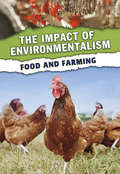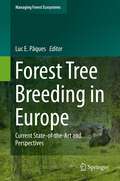- Table View
- List View
Fiduciary Law and Responsible Investing: In Nature’s trust (Routledge Research in Finance and Banking Law)
by Benjamin J. RichardsonThis book is about fiduciary law’s influence on the financial economy’s environmental performance, focusing on how the law affects responsible investing and considering possible legal reforms to shift financial markets closer towards sustainability. Fiduciary law governs how trustees, fund managers or other custodians administer the investment portfolios owned by beneficiaries. Written for a diverse audience, not just legal scholars, the book examines in a multi-jurisdictional context an array of philosophical, institutional and economic issues that have shaped the movement for responsible investing and its legal framework. Fiduciary law has acquired greater influence in the financial economy in tandem with the extraordinary recent growth of institutional funds such as pension plans and insurance company portfolios. While the fiduciary prejudice against responsible investing has somewhat waned in recent years, owing mainly to reinterpretations of fiduciary and trust law, significant barriers remain. This book advances the notion of ‘nature’s trust’ to metaphorically signal how fiduciary responsibility should accommodate society’s dependence on long-term environmental well-being. Financial institutions, managing vast investment portfolios on behalf of millions of beneficiaries, should manage those investments with regard to the broader social interest in sustaining ecological health. Even for their own financial self-interest, investors over the long-term should benefit from maintaining nature’s capital. We should expect everyone to act in nature’s trust, from individual funds to market regulators. The ancient public trust doctrine could be refashioned for stimulating this change, and sovereign wealth funds should take the lead in pioneering best practices for environmentally responsible investing.
A Field Guide to Community Based Adaptation
by Tim MageeThe world's poor will be the most critically affected by a changing climate—and yet their current plight isn't improving rapidly enough to fulfill the UN’s Millennium Development Goals. If experienced development organizations are finding it difficult to solve decades-old development problems, how will they additionally solve new challenges driven by climate change? This book illustrates how including community members in project design and co-management leads to long-lasting, successful achievement of development and adaptation goals. This field guide provides a system of building block activities for staff on the ground to use in developing and implementing successful adaptation to climate change projects that can be co-managed and sustained by communities. Based on years of use in 129 different countries, the techniques illustrated in this field guide use a step-by-step progression to lead readers through problem assessment, project design, implementation, and community take over. The book equips development staff with all the tools and techniques they need to improve current project effectiveness, to introduce community based adaptation into organizational programming and to generate new projects. The techniques provided can be applied to broad range of challenges, from agriculture and soil and water challenges, to health concerns, flood defences and market development. The book is supported by a user-friendly website updated by the author, where readers can download online resources for each chapter which they can tailor to their own specific projects. This practical guide is accessible to all levels of development staff and practitioners, as well as to students of development and environmental studies.
Field Guide to the Common Bees of California
by Gretchen LebuhnThis engaging and easy-to-use natural history guidebook provides a thorough overview of native and honey bee biology and offers tools for identifying the most common bees of California and the Western United States. Full-color illustrations introduce readers to more than 30 genera of native bees, noting each one's needs and habits and placing them in their wider context. The author highlights bees' ties to our own lives, the food we eat, and the habitat we provide, and suggests ways to support bees in our own backyards. In addition to helping readers understand and distinguish among major groups of bees, this guide reveals how bees are an essential part of healthy ecosystem and how many plants, including important crop plants, depend on the pollination they provide. As growing evidence points to declining bee populations, this book offers critical information about the bond between plants and pollinators, and between humans and nature. Thoroughly researched and full of new insights into the ancient process of pollination, Field Guide to the Common Bees of California; Including Bees of the Western United States is invaluable for the window it opens onto the biodiversity, adaptive range, and complexity of invertebrate communities.
The Field of Ice
by Jules VerneAn exhilarating narrative of an obsessed British expediter by Jules Verne. This northward excursion led by Captain Hatteras is full of life-threatening adventures and hair-breadth escapes of him and his crew. As he discovers the truth about the polar terrain, this work presents amazing possibilities. A bitter-sweet ending awaits the readers in this mind-boggling thriller!
Field Sampling for Environmental Science and Management
by Richard Webster Murray LarkScientists and consultants need to estimate and map properties of the terrestrial environment. These include plant nutrients and parasites in soil, gaseous emissions from soil, pollutant metals and xenobiotics in waste and contaminated land, salt in groundwater and species abundances above ground. The scale varies from small experimental plots to catchments, and the land may be enclosed in fields or be open grassland, forest or desert. Those who sample the variables to obtain the necessary data need guidance on the design and analysis of sampling methods for their conclusions and recommendations to be valid. This book provides that guidance, backed by sound rationale and statistical theory. It concentrates on design-based sampling for estimates of mean values of environmental properties, emphasizing replication and randomization. It starts with simple random sampling and then progresses to more efficient designs, such as spatially stratified random sampling, stratification by classes and cluster sampling. It includes a section on purposive sampling in classical soil survey, which is relevant to other environmental properties such as vegetation. It also describes the effects of bulking on errors and the use of ancillary information and regression to improve estimates. The authors draw the important distinction between design-based sampling for estimating means and model-based methods (geostatistics) for local spatial prediction and mapping, and focus on the latter. They describe designs suitable for computing variograms and prediction by kriging, as well as a staged approach, so that sampling is neither inadequate nor excessive, and designs adapt as knowledge is accumulated. Including numerous worked case studies of sampling in agriculture, ecology and environmental science, the book will be of immediate practical value.
Fish On! (Lucky Luke's Hunting Adventures)
by Kevin LovegreenA perfect day on a magical lake filled with fish. The smell of pine trees, the bright sunshine, a nice breeze: the stage is set for a great adventure! Join Luke at his grandparents' lake cabin, tucked way back in the woods, as he experiences an amazing morning of fishing. Luke has to find the hot spots, pick the right lures, and chase a lunker that steals his lucky Basserino. It's the kind of morning anyone who's ever held a rod dreams of!
Fisherman's Fall
by Roderick L. Haig-BrownOriginally published in 1964, Fisherman's Fall brings a unique perspective to the world of fall fishing. In the preface, Robert L. Haig-Brown ruminates on the attempts to preserve the salmon and trout in the rivers of British Columbia. What we know could save them, yet what we do contradicts that knowledge. Gaining the knowledge in this book will help fishers learn the nature of the fish and might even inspire some to contribute to their preservation.Fisherman's Fall gives fishers all the tools to become adept at fishing the rivers of British Columbia as well as firsthand knowledge of the fish of those rivers and their habits. In fabulous prose, readers will discover the unique fishing facts and techniques that accompany the fall season, differences between salmon in salt water and fresh water, the ocean years of salmon, the nature of estuaries, steelhead mysteries, and what makes an ideal stream.Besides gathering wise information, readers get to glimpse the inner thoughts of a fisherman in the chapters of Haig-Brown's own thoughts while fishing. These wise words will speak to any fisher, and they will even speak to those who have never been on a river. Combining angling advice and inner reflection, this book is a must-have for fishermen and fisherwomen of all ages.
The Fishing Life: An Angler's Tales of Wild Rivers and Other Restless Metaphors
by Paul SchulleryThe Fishing Life is an entertaining anthology of fishing anecdotes and well-researched articles from across Paul Schullery’s research and fishing career. The author offers up stories, essays, farces, daydreams, and ruminations that will engage readers of all kinds.Of course, being a fisherman and living the fishing life goes beyond just those days spent with rod and reel in hand. It is something that occupies your mind and your heart, not just your hands. As such, this collection is not only about intense fishing moments, but also “a book about those long stretches of thinking, hoping, daydreaming, and otherwise getting ready that occupy fishermen between those moments.” It is truly a way of life.Whether you’re looking for informal advice or deep reflections related to the sport and art of fishing, The Fishing Life is sure to catch your fancy—and give you plenty to dream about, when you can’t be on the water.
Fishing the River of Time
by Tony TaylorAt age eighty, Tony Taylor journeys from Sydney, Australia, to British Columbia to fish the Cowichan River with his eight-year-old grandson, Ned. The trip is an opportunity for Tony to return to a landscape that has had a profound effect on his life and his way of thinking, and to share this place with his grandson. As Tony teaches Ned the patient art of fly-fishing, a lifetime of memories, thoughts, and stories unspool in peaceful reflections by the water's edge. Fishing the River of Time is an elegant meditation on nature, life, and family, written with warmth and wisdom. It inspires self-reflection and an appreciation of the natural world and the fundamentals of our human experience. It is destined to become a classic work of simple living in the mold of Henry David Thoreau's Walden.
Five-Star Trails: Chattanooga
by Johnny MolloyFive-Star Trails: Chattanooga is a handy guide for area residents, vacationers seeking outdoor fun, and for business travelers with a free afternoon. With a diverse collection of hiking routes, the book offers choices for everyone from solo trekkers to companions to families with either youngsters or oldsters to consider.This book profiles close-in urban and suburban locations that can satiate scenery-hungry residents and also offers routes of superlative beauty in the adjacent local, state, and national parks. All this adds up to a hiker's nirvana.Chattanooga is ideally situated to enjoy some of the Southeast's best scenery. To the east and south are two huge tracts of sublime and primitive national forest land -- the Chattahoochee and the Cherokee -- much within an easy drive of Chattanooga. The national forests also offer camping, hunting, fishing, nature study, and more. To the west rises the Cumberland Plateau, with its finest features protected under the umbrella of Tennessee's state park system, centered by the Volunteer State's master path, the Cumberland Plateau. The geologically fascinating Cumberland offers hiking routes along rushing rivers, deep gorges, wild waterfalls, and other rock features.Other parks lie within the bounds of Alabama and Georgia, from Little River Canyon to Cloudland Canyon to Chickamauga Battlefield. Lookout Mountain and other local hiking destinations only add to the possibilities. The wide variety of trails, distances, difficulties, and destinations will suit any hiker's mood and company.Researched, experienced, and written by a local author, the guide provides in-depth trail descriptions, directions, and commentary on what to expect along the way. Each hike features an individual trail map, elevation profile, and at-a-glance key info, helping readers quickly determine the perfect trip for them when they are ready to head out the door.Sized to fit in a pocket, the book is convenient to keep in the car or toss into a backpack. Driving directions direct hikers to the nearest trailhead parking areas, and GPS trailhead coordinates get them to the start of the trail.
Five-Star Trails: South Carolina Upstate
by Sherry JacksonThe South Carolina Upcountry is gaining more popularity and people visiting will need to know how to discover all it has to offer. Outdoor activities here abound and there are a good variety of trails for hikers of all levels. From waterfalls to amazing mountain views, each trail offers hikers an incredible experience. Since the Upcountry is relatively "undiscovered", there are very few books that have a true compilation of hikes in the area. Five-Star Trails: South Carolina Upstate will bring together those hiking trails that offer a "five star" experience.Each trail has been thoroughly researched, recently hiked and includes a detailed description, trail profiles and map. At a glance ratings in important categories such as Scenery, Trail Condition, Difficulty, Solitude and appropriateness for children let you quickly select a trail that fits your tastes and ability. Other useful information such as fees, restrictions for dogs on the trail as well as advice on when to visit offers you the best information so you can plan your trip with ease. Five-Star Trails: South Carolina Upstate provides directions and commentary for each trail on what to expect along the way, making it more than just an average guidebook. This guide will lead hikers off the beaten path to find exceptional beauty as well as peace of mind. The diversity in terrain invites all levels of abilities and skills. Outdoor enthusiasts of every level will have reason to grab this guide and take a hike.This book offers easy-to-moderate trails that are within driving distance from a reader's workplace or home in the South Carolina Upstate. Without this book, they might miss the hidden hiking treasures of the area, but with the expert help of Sherry Jackson, readers will enjoy the region's best trails!
Five-Star Trails: Louisville and Southern Indiana
by Valerie AskrenKnown as the City of Parks, Louisville has long valued the natural landscape and the provisioning of outdoor recreation. In 1891 Frederick Law Olmsted, the father of American landscape architecture, was commissioned to develop an extensive park system for Louisville that eventually included 18 parks and 6 interconnecting parkways. Since that time, Louisville has continued to invest resources to build a first-class park system. Nestled within the Ohio Valley, and bordered by the knobs region to the south and the heavily forested areas of Indiana to the north, Louisville lies at the heart of an endless array of hiking opportunities.Five-Star Trails: Louisville showcases many of the hiking trails and walking paths within the city or within easy driving distance in central Kentucky and southern Indiana. Designed specifically for day trips, this book includes several of the area's most popular parks, as well as many of the lesser-known hiking trails in nature preserves, wildlife management areas, and national forests.
Five-Star Trails: Raleigh and Durham
by Joshua KinserFive-Star Trails: Raleigh and Durham is a guide to the best day-hiking trails within a two-hour drive of the urban areas of Raleigh and Durham. Raleigh is North Carolina's capital and an anchor for the state's famous Research Triangle that includes Durham and Chapel Hill. Amid this metropolitan complex that also embraces Cary, Apex, and Wake Forest-home to more than 1.7 million people-the author leads readers to myriad places for scenic beauty, to sites of historic significance, and to neighborhoods that showcase the charms of urban life. All of the routes stay true to the book's "Five-Star Trails" title, based on the book series' rating system for scenery, trail condition, suitability for children, difficulty level, and solitude. To be selected for the book, each trail must truly shine in one or more of those areas while, at the same time, all of the trails combine to offer diversity for a wide range of hikers. Thus, this is the guidebook for a hiker seeking an arduous climb to a scenic overlook as much as it is for a weekend walker who wants an easy trail for his or her family.
Five-Star Trails: Columbus
by Robert LoewendickFive-Star Trails: Columbus is the most current and comprehensive guide to hiking the area and rates hikes on the following factors: scenery, trail condition, difficulty, appropriateness for children, and solitude. Each hikes also includes detailed landmarks, flora, fauna, and local history. In this Columbus guide, an impressive collection of routes ranges north, east, south, and west from the metro center, as well as within the urban setting. This capital city is rich in metro parks, natural areas and preserves, state parks, and state forests. And this diversity of hiking terrain invites all levels of abilities and skills. Thus, this guidebook is geared not only to avid trekkers seeking more challenge than a paved neighborhood path, but also to families and senior citizens. Outdoor enthusiasts of every stripe will have reason to grab this book and, well, take a hike. Sized for easy carrying or tossing into a backpack, this handy guide will quickly become a treasured resource among Columbus locals and visitors alike.
Flat Stanley Goes Camping (I Can Read Level 2)
by Jeff BrownElementary-school kids love Jeff Brown’s classic character, Flat Stanley—the amazing paper-thin boy who can slide under doors, fly like a kite, and travel by mail.In his latest fun-filled adventure, Flat Stanley Goes Camping, Stanley and the Lambchop family take a trip to the woods. It gets a little scary when Stanley and his brother, Arthur, run away from a skunk—and straight toward the edge of a cliff!Flat Stanley Goes Camping is an I Can Read book designed to engage and excite child readers. It is a Level 2 book, which means it is perfect for kids who are starting to read on their own but still need some help.
Floral Ornament (Dover Pictorial Archive Ser.)
by Carol Belanger GraftonGraphic artists and craftworkers in search of attractive and unusual floral motifs will find them in this rich treasury of exquisite designs. Carol Belanger Grafton has selected over 350 handsome floral and foliated arrangements from a wide variety of Victorian-era sources. Reproduced from such rare publications as L'Art Pour Tous, The Art Journal, The Illustrated London News, Harper's Weekly, and The British Printer, these lovely images appear in a wide variety of configurations -- as decorative embellishments on a saucer and teacup, on picture frames and wall sconces, as flowing patterns that lend themselves well for use as frames and borders, and much more. These imaginative accents will not only enhance such print projects as brochures, newsletters, posters, signs, and catalog copy, they'll also serve as a source of inspiration to anyone working in the arts and crafts.
Florida Sinkholes: Science and Policy
by Robert BrinkmannBelow the live oaks, palm trees, cypress swamps, and springs, water is slowly wearing away the limestone bedrock of Florida. The erosion is often unseen, and over time it can result in shocking cave-ins like the destructive spectacle of the 1981 Winter Park sinkhole.Florida Sinkholes--the first comprehensive book on the subject--is an easy-to-follow guide to understanding how sinkholes form and what to do about Florida's sometimes pockmarked landscape. City planners, construction managers, developers, and homeowners alike will find this book invaluable because of the heavy impact and increasing frequency of sinkhole formation in the state. Amateur geologists will be fascinated by the subtle forces of nature that can make solid rock disappear. Tackling the problem of sinkholes in useful detail, this book packs an abundance of sound scientific fact into frank, readable language. Learn about the captivating workings of karst, a term for the swiss cheese-like formations of soluble rock that underlie the peninsula. Discover current state-of-the-art approaches to mapping sinkholes and subsurface voids. Review such practical concerns as structural damage, repairs, insurance problems, and management of karst lands. Examine case studies of several notable sinkholes and sinkhole events. Even before you've finished reading, you may find yourself itching to get out and visit these intriguing marvels of Florida geology for yourself.
Flowering Earth
by Donald Culross PeattieFlowering Earth is an extraordinary work in which Peattie explores the origin and significance of plant life with an unmatched sense of astonishment and reflection. According to The New York Times, his prose in Flowering Earth "is pervaded by a continuous sense of beauty and illuminative insight," and Books hails it as a piece "for people who are refreshed by any sort of emancipation from the trivial..."
Flowering Earth
by Donald Culross PeattieFlowering Earth is an extraordinary work in which Peattie explores the origin and significance of plant life with an unmatched sense of astonishment and reflection. According to The New York Times, his prose in Flowering Earth "is pervaded by a continuous sense of beauty and illuminative insight," and Books hails it as a piece "for people who are refreshed by any sort of emancipation from the trivial..."
A Flyfisher's World
by Nick Lyons Mari LyonsThis ample selection of articles and essays by one of America's most popular writers about fly-fishing begins with a moment on Michigan's Au Sable River--the exact moment when the author lost his heart to fly-fishing. This collection chronicles a fishing life punctuated by a revealing trip with one of his grown sons and mellow reflections from a hospital bed.This is the broadest of Nick Lyons's books, with sections on tarpon and pike fishing in the Marquesas and in France, bass bugging on a small Connecticut pond, and trout fishing on unnamed creeks and blue-ribbon western rivers, as well as reflections on such aspects of the sport as the flies that are the underpinning of it all, the pursuit of records, the odd characters he's met along the way, and the increasing challenge of crowds who pursue this ever-popular sport.By turns canny, hilarious, inquiring, and philosophic, A Flyfisher's World is an impressive addition to Nick Lyons's important body of writing about fly-fishing.
The Flying Beaver Brothers and the Mud-Slinging Moles (The Flying Beaver Brothers #3)
by Maxwell EatonThe Flying Beaver Brothers are back! All is not well on Beaver Island. Ace and Bub have noticed a number of things (trees, houses, evil penguins) sinking into the ground. They soon discover that Captain Jo Jo and his scurvy crew of mud-making moles have hatched a nearsighted plot to steal dirt from Beaver Island to make their own island home even bigger! Can Ace and Bub stop their brotherly bickering and save Beaver Island before it disappears forever?
The Flying Beaver Brothers: Birds vs. Bunnies (The Flying Beaver Brothers #4)
by Maxwell EatonIn their fourth adventure, the Flying Beaver Brothers set off in their sailboat to enjoy some well-deserved rest and relaxation at nearby the island. But the birds and bunnies who live on Little Beaver Island have other ideas. Before long, Ace and Bub find themselves embroiled in an all-out war between the feathers and the fuzz. Can the Flying Beaver Brothers bring peace to Little Beaver Island?
Flying Blind
by Don MitchellWhen Middlebury writing professor Don Mitchell was approached by a biologist with the Vermont Fish and Wildlife Department about tracking endangered Indiana bats on his 150-acre farm in Vermonts picturesque Champlain Valley, Mitchells relationship with bats--and with government--could be characterized as distrustful, at best. But the flying rats, as Mitchell initially thinks of them, launched him on a series of "improvements" to his land that would provide a more welcoming habitat for the bats--and a modest tax break for himself and his family. Whether persuading his neighbors to join him on a "silent meditation," pulling invasive garlic mustard out of the ground by hand, navigating the tacit ground rules of buying an ATV off Craigslist, or leaving just enough honeysuckle to give government inspectors "something to find," Mitchells tale is as profound as it is funny--a journey that changes Mitchells relationship with Chiroptera, the land, and, ultimately, his understanding of his own past. Ruminating on the nature of authority, the purview of the state, and the value of inhabiting ones niche--Mitchell reveals much about our inner and outer landscape, in this perfectly paced and skilled story of place.
Food and Farming (The Impact of Environmentalism)
by Jen GreenWe are all aware of the importance of the environment - it's in the news, it affects our behavior and the decisions we make every day. But what actual impact has environmental thinking had on the world around us? This thought-provoking book looks at the way changing ideas about the environment and sustainability have affected the way we obtain our food, and will do so in the future.
Forest Tree Breeding in Europe: Current State-of-the-Art and Perspectives
by Luc E PâquesForest tree breeding has been ongoing for more than 70 years across Europe. It has successfully generated improved varieties for the major economical forest tree species. They are part of the present European forestry landscape and largely contribute to intensive wood production and other forest activities. In this book, we describe the state-of-art of breeding for the main forest tree species. We provide a comprehensive, unique and up-to-date overview of the major scientific results and breeding achievements gathered from the many programmes scattered across Europe. The book is divided into 10 chapters, each as a monograph corresponding to a species or group of species Abies spp., (Larix spp., Picea abies, Picea sitchensis, Pinus sylvestris, Pseudotsuga menziesii, and Mediterranean pines; Acer pseudoplatanus, Fraxinus excelsior, and Prunus avium). Each of them is written by a group of experts and focuses on the distribution and economical importance of the species; motivation for breeding and breeding objectives; intraspecific genetic variability, breeding populations and breeding strategy; forest reproductive material deployment including mass-propagation and, prospects and perspectives for joint research and breeding. The book is a unique and up-dated source of information for students, researchers and professionals interested in the genetics and domestication of forest tree species.
